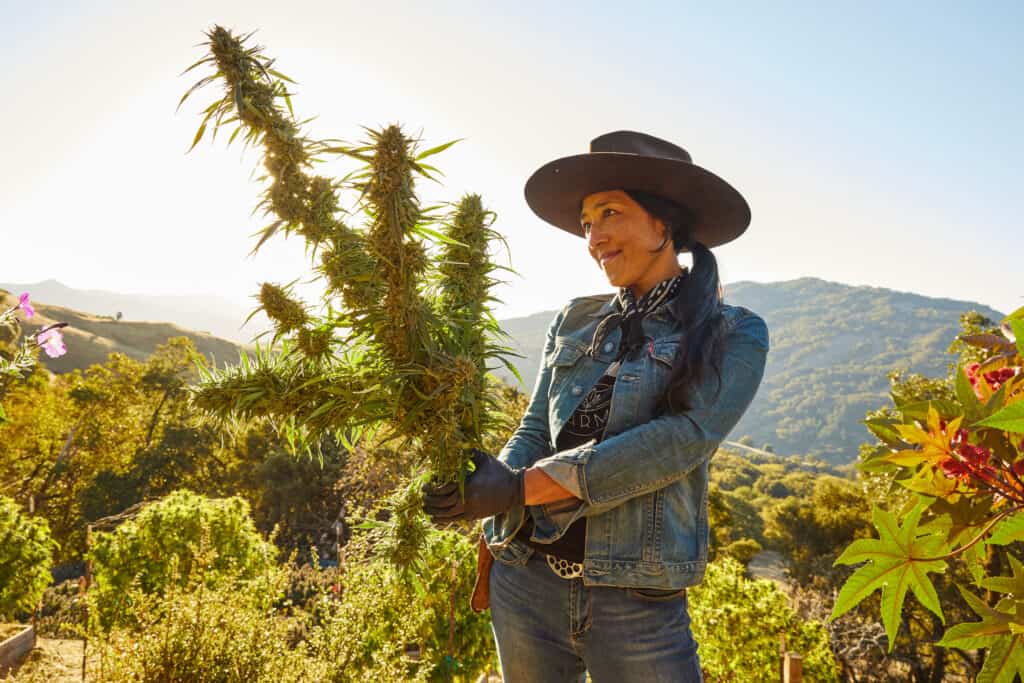“When the Moon runs high, expect cool or cold weather. When the Moon runs low, expect warm weather.” – The Farmer’s Almanac, 1882
Tina Gordon, owner/operator of Moon Made Farms, lets moonlight illuminate her visions for crops of sungrown cannabis. Sun and moon. Energy and water. Earth and sky.
On eighty acres in southern Humboldt County, which Gordon describes as “surrounded by oak, madrone, bay, Douglas fir, and buckeye trees that provide a rich ecosystem that supports wildlife and the fertility of the soil,” she has learned to follow what nature dictates, while replenishing the land and producing robust sungrown cannabis plants.
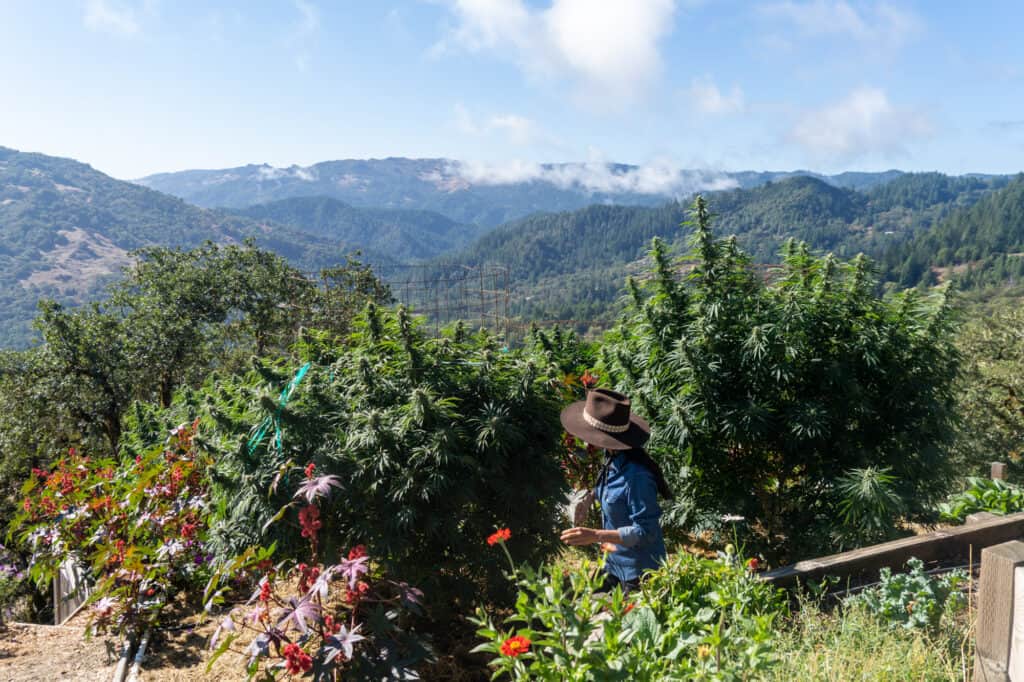
The Emerald Triangle is, after all, the most legendary cannabis growing region in the country, if not the world. Gordon touts the quality of California’s sunlight and calls the sun “our cosmic lightbulb.” Thirty-three miles from California’s Lost Coast, temperate sunny days give way to starry nights, often shrouded by vaporous tendrils of fog that get caught in the forests and canyons.
“But it’s also all of the subtleties of the night sky,” she explained. “This affects the terpene expressions, and the terpene expressions are going to affect the expression of the plant – meaning, how it affects a human being when they ingest it. One of the things that I like to share is that I think sungrown gets you higher.”
At Moon Made Farms, working with nature and seasoned local cannabis geneticists results in genetically diverse, organic, artisan-bred outdoor strains like Cherry Moon, Team Cream, and Pineapple Wonder. At just over 30 % THC, Orange Valley Sun is the farm’s most high-octane strain. But THC content isn’t the primary goal — each strain is bred for a heady terpene profile that’s the trademark of the farm’s namesake lines of flower and pre-rolls. They also collaborate with like-minded manufacturers, including Kikoko, Tangled Roots, Cosmic View, Drew Martin, Nasha Hash, and Chemistry.
“I have sat with people who have incredibly high tolerance for THC and they’re always like, chasing the THC percentage, but they sit down with something that’s 20 percent THC, that’s grown full spectrum with a broad terpene profile, and they get really high,” Gordon said. “It’s that high that people are like, ‘Wow, I haven’t felt like this in a long time.’ It’s that high people missed, the high that people are chasing – but they don’t know that it’s not about THC percentage, it’s about terpene profile. It’s about the entire everything that the plant has to offer.”
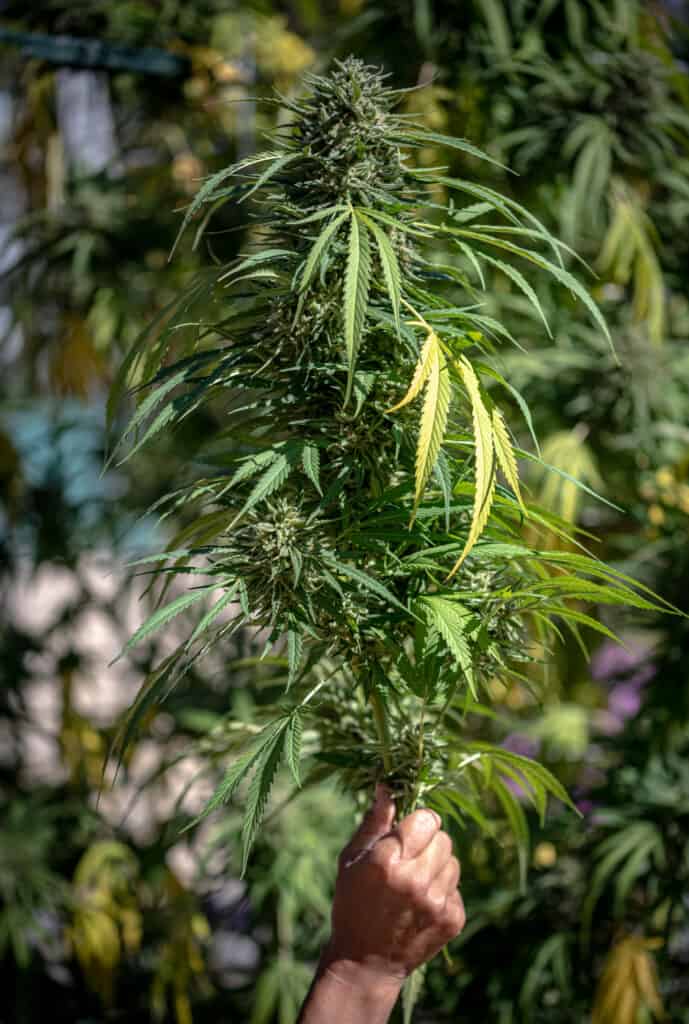
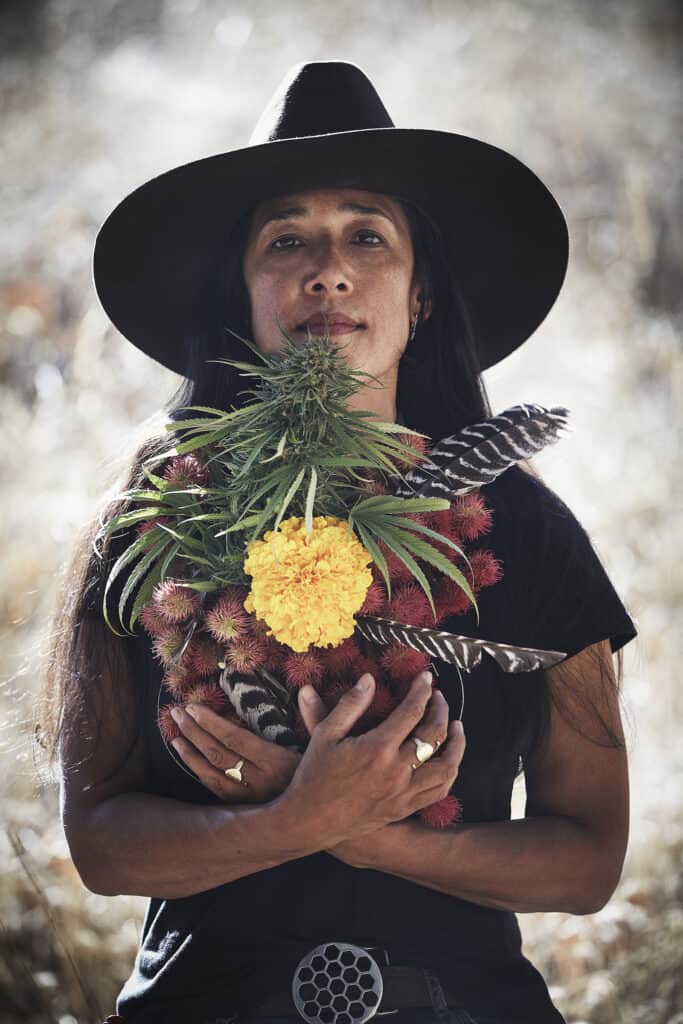
A somewhat apt comparison can be made between indoor cannabis and hothouse roses. The lovely blooms that you see in bunches in grocery stores, while beautiful and hardy, rarely develop much of a scent. That’s because they’re grown under lights in hothouses all over the world to go to market, maturing quickly – too quick to develop the terpenes that make garden roses smell so sweet. Similarly, Gordon said, indoor cultivators are often in a race to grow plants that produce ever higher levels of THC, without much consideration for other important botanical compounds or natural techniques.
“It’s a photosensitive plant, like that’s what triggers this plant’s maturity and all of its cycles, it’s photosensitive and indoors, it’s either lights on or lights off. When you’re growing full-spectrum under the sun and the moon, you’ve got the subtlety that is, every single minute, it’s changing. Right?” Gordon explained. “It’s in constant flux and this is why the expressions are going to be complex. This is why you get that loud nose. And this is why you get that effect where you’re just like, I feel really truly different.”
In today’s modern world, cultivating crops by the light of the sun and moon or using regenerative techniques may seem like the quintessential Humboldt hippy trip, but following the rhythms and patterns of natural cycles has, of course, been practiced on small farms since the dawn of civilization. In 77 AD, Roman naturalist Pliny the Elder in historic tome Natural History, documented the age-old belief that the moon controlled water and moisture.
Gordon is also tuned into natural cycles. “We have a pond where we catch water, right? Ponds are incredible. It’s recharging the groundwater as it’s sitting there. So, no plastic liner or anything, you know, and then it holds a certain amount of water,” she explained, “and that’s our AG water. That’s what we use to water plants. And so, how much water does that pond hold? Hold dictates the square footage we’re going to grow. So, we’re not trying to find the square footage based upon our business model. We’re responding to what the land provides.”
Even when you strip off the tie-dyed spectacles, though – Gordon and other outdoor growers have a point regarding the need for more sustainable farming practices, especially in California. The fifth-largest global supplier of food and cotton, the state has been battered by climate change and suboptimal land management policies, made evident by drained reservoirs and historic wildfires that have burned millions of acres in recent years, amidst a 1,200-year drought.
And industrial cannabis is part of the problem. A 2021 study published in peer review Journal of Cannabis Research said, “producing one kilogram of processed cannabis indoors leads to 4600 kg of CO2 emissions to the atmosphere, equivalent to one passenger vehicle driven for one year or 11,414 miles driven by an average passenger vehicle (Mills 2012).”
Significant energy use estimates for indoor cannabis cultivation in the US were also noted by study authors, who surmised, “As one of the most energy-intensive industries in the USA (Warren 2015), cannabis cultivation results in up to $6 billion in energy costs annually, accounting for at least one percent of the nation’s electricity. (Mills 2012).
“One of the pieces here is that the [California] regulations favor indoor cultivation in a state that has abundant sun,” Gordon said plainly. “There’s really only three percent of the entire globe where this plant grows as ideally as it does in the Emerald Triangle – that’s a Mediterranean climate, ultimately. [But] California has decided to make indoor and all-season greenhouses the standard.”
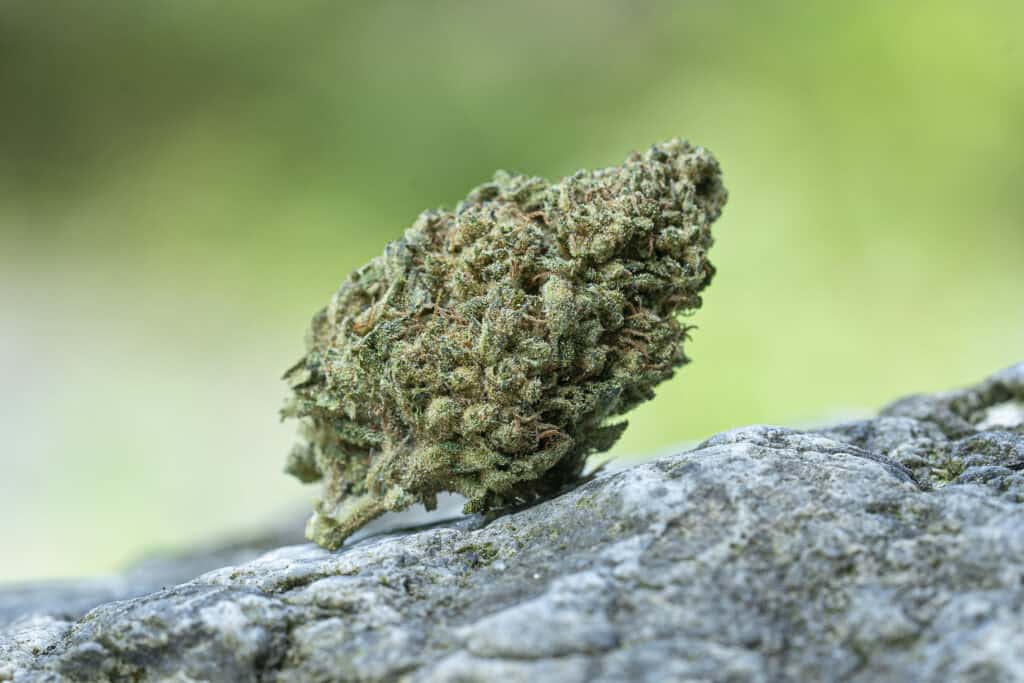
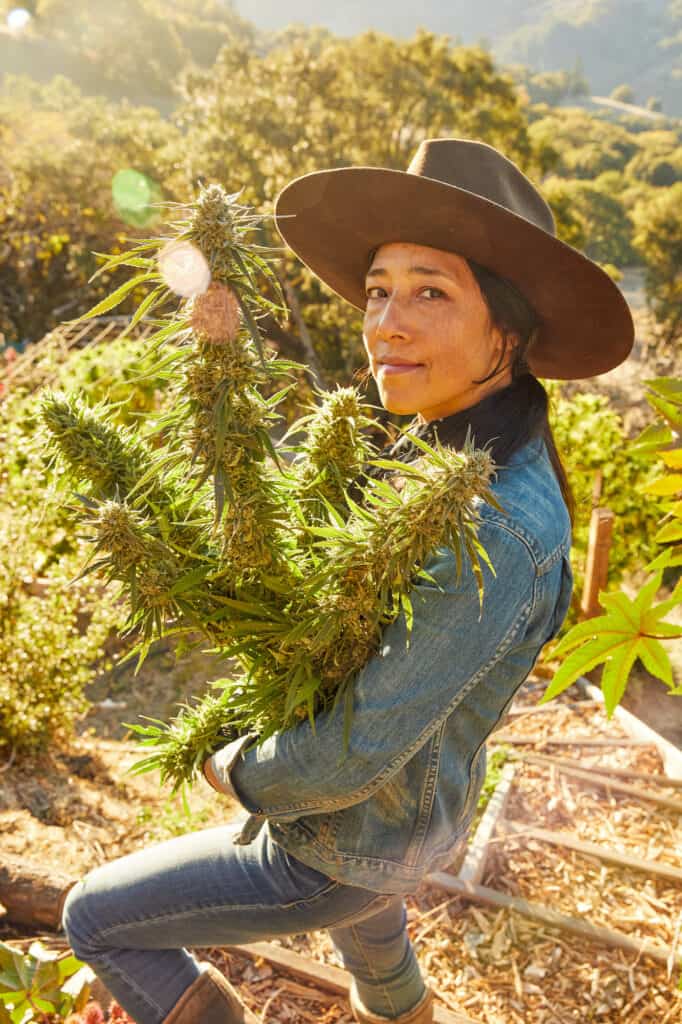
Gordon’s opinion aligns with many small legacy growers who feel that they have been pushed out of the market by corporate cannabis and their lobbyists in Sacramento. Small cannabis farms that had been established in Northern California since the 1960s were able to take part in the new market after 1996, with the approval of Proposition 215, which decriminalized medical marijuana and saw the first wave of medical dispensaries and collectives. For decades, small farms supplied medical cannabis vendors, under legislation that was largely unregulated.
In 2016, Proposition 64, which legalized adult-use cannabis, was supposed to have built-in protections for small farms that limited purchases of multiple half-acre licenses for cultivation for at least five years. But in 2017, the California Department of Food and Agriculture removed the limitation, allowing deep-pocketed cannabis corporations to buy up acreage, primarily for indoor grows. As larger indoor farms have been able to establish throughout the state, small outdoor growers increasingly cannot compete with industrial agricultural techniques and marketing mega-budgets, as well as costly licensing and regulatory schemes.
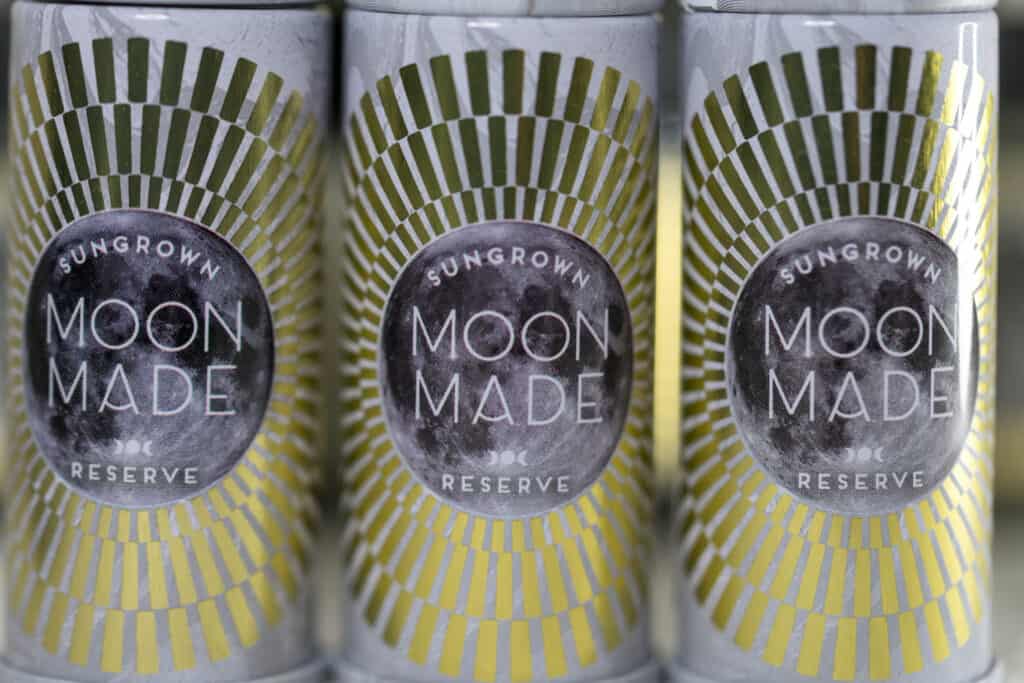
“So, instead of leaning upon and leveraging the existing supply in the Emerald Triangle, and in these heritage, legacy regions – basically the Emerald Triangle, Santa Cruz Mountains, and Nevada County – there’s enough production for, not only California, but arguably the country,” Gordon said further.
Asked if it’s been hard on the small legacy farmers that she knows and others in the region that have been affected by wildfires and drought, Gordon replied, “Clearly it’s incredibly challenging right now. The reason any small sun-grown farmer that is doing this right now, is doing it for the love of the plant, the love of the environment, the love of the people. Like, I would argue, we are concerned about what cannabis is reaching the public? What are people smoking? What are people ingesting?
“I want people to ingest the most pure, clean flower, grown with love and intention,” she emphasized. “That is good for the land. That is good for people. That will bring the most possible benefit to people.”


